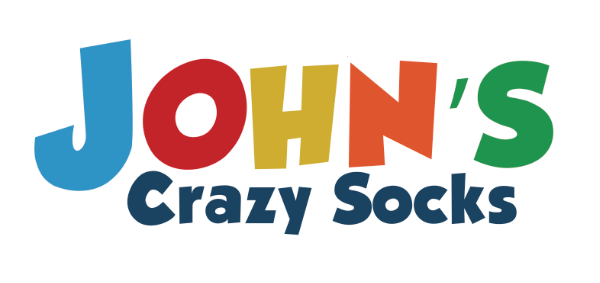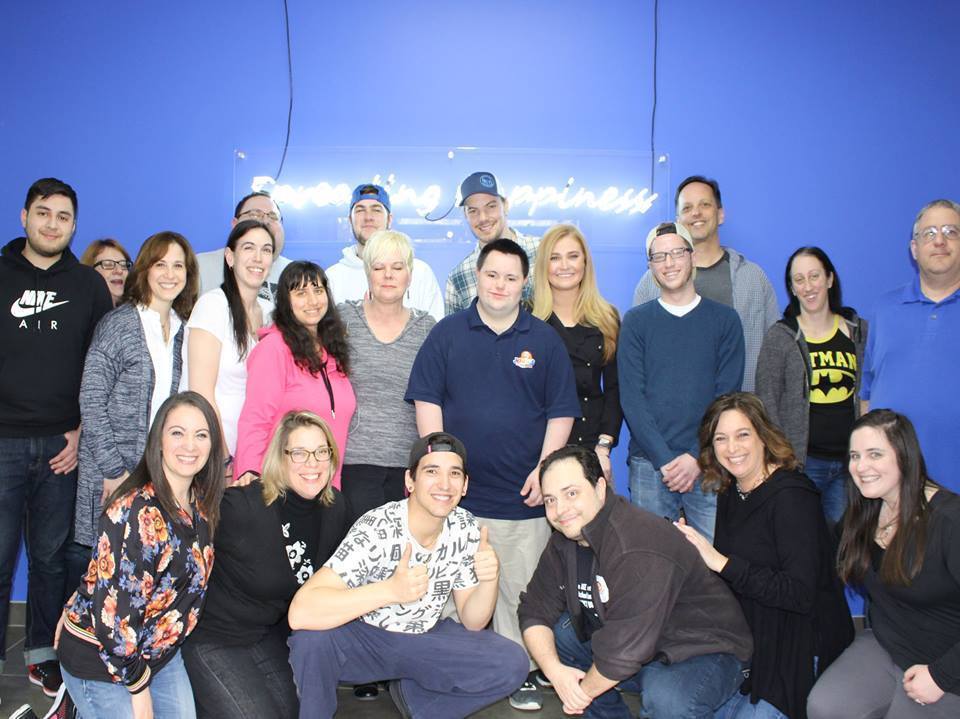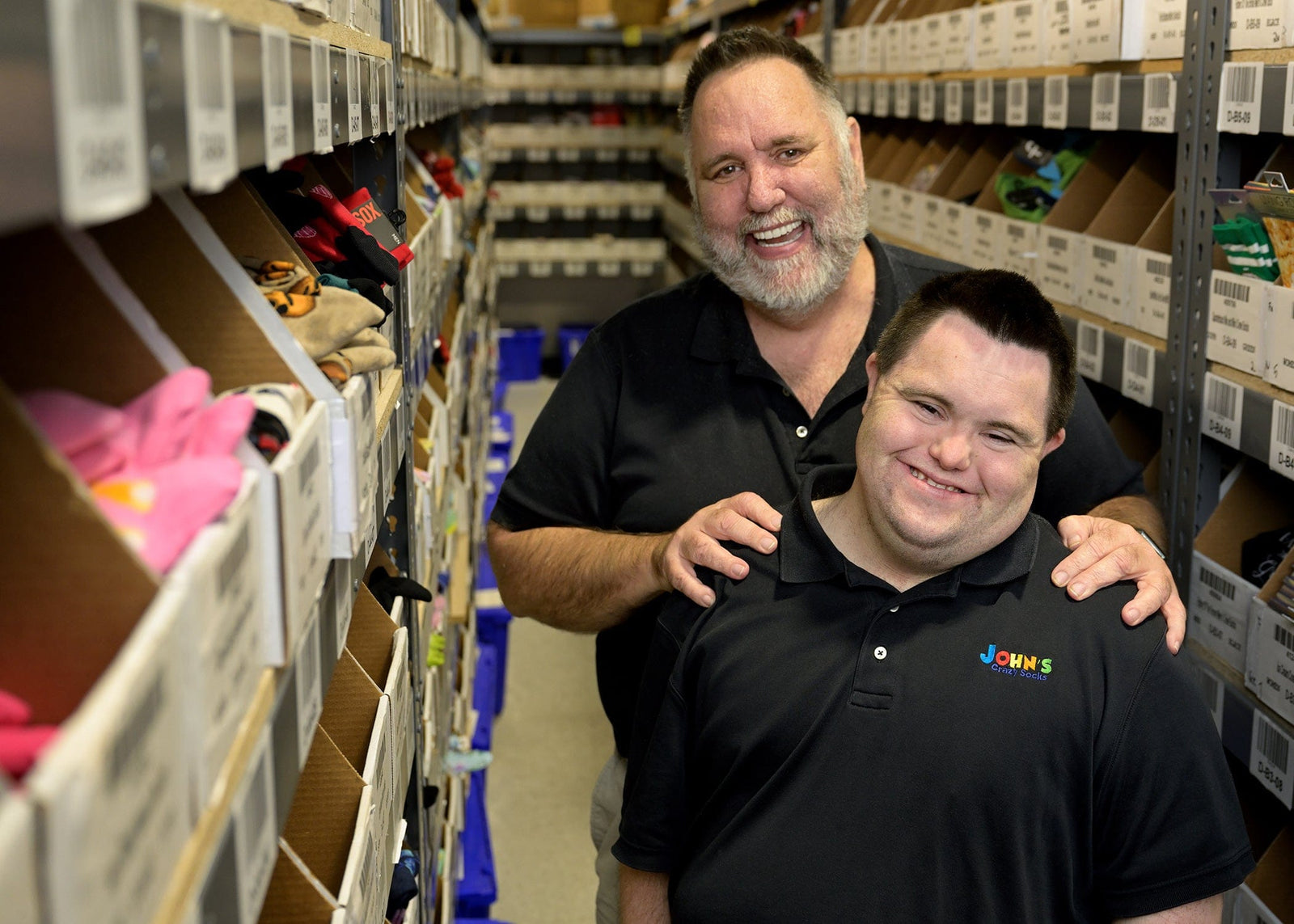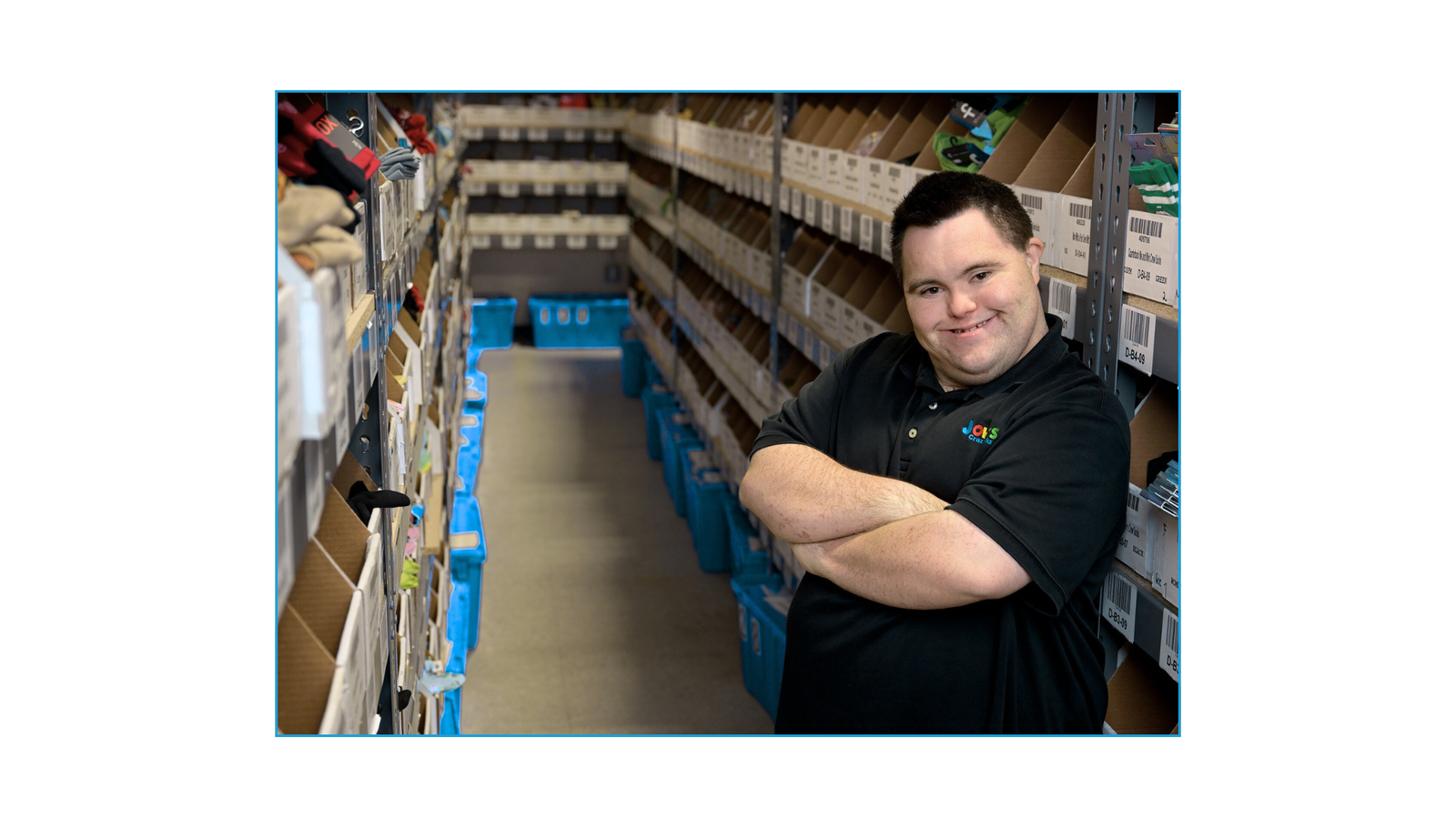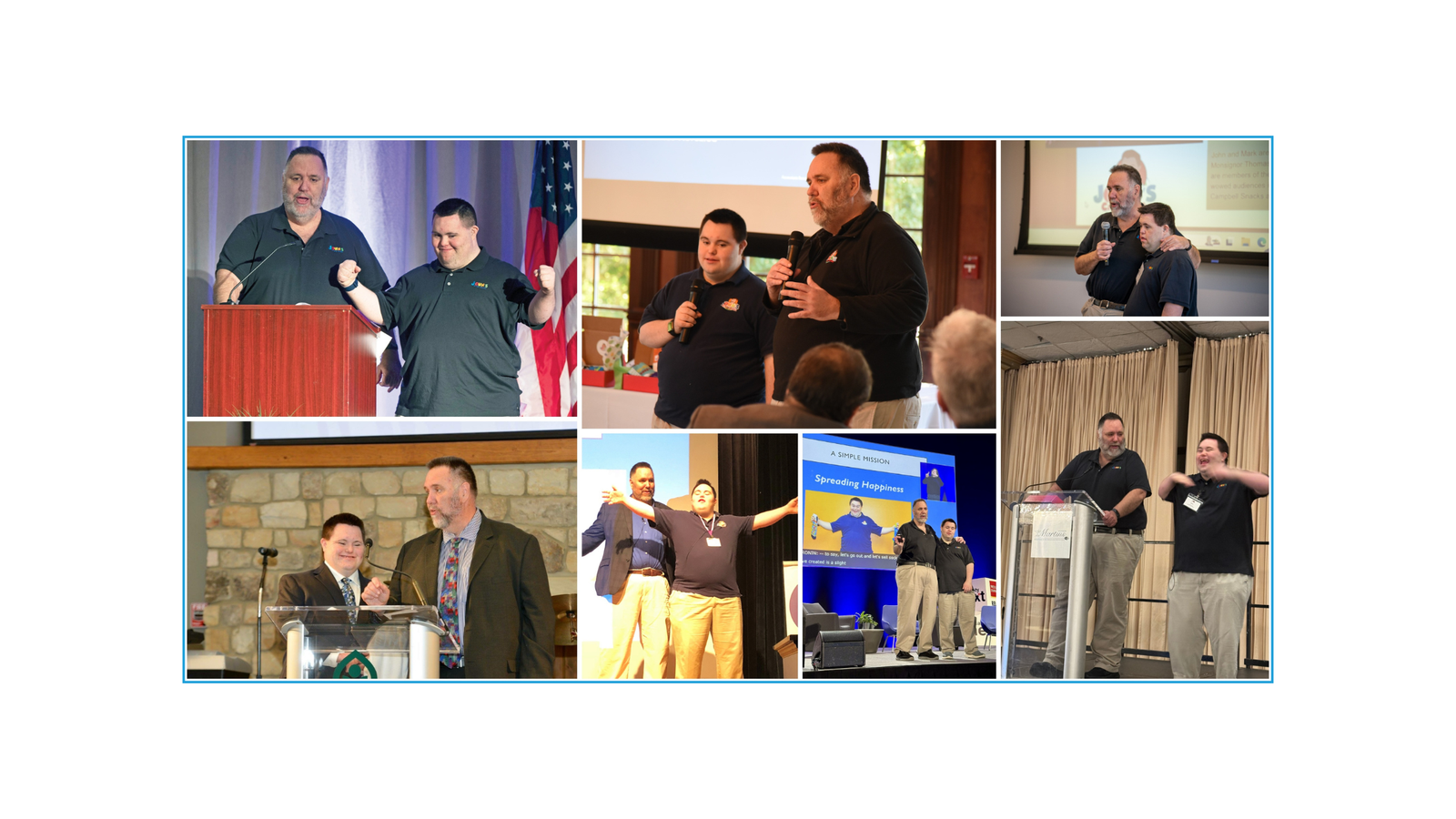John’s Crazy Socks: A Learning Organization
From Mark X. Cronin
At John’s Crazy Socks, we’re on an adventure. We’re showing the world what’s possible. We’re showing that spreading happiness can be a valid business mission. We’re showing that the more we do for others, the more successful our business. We’re showing what people with differing abilities can do, in fact we’re showing what we can all do. Our ambition is nothing short of changing the world and we’re off to a good start: 50 states, 44 countries, 120,000 plus orders, 185,000 Facebook followers, maybe 100 million views of videos, testifying before Congress and more. We have done these things together and each person in our organization has helped make this possible. And we’ve only just begun.
For us to get this far, we have had to be a learning organization. Each of us has learned more about ourselves, learned to do new things, learned to do more. As an organization, we keep learning to handle more business, to reach more people and to touch more people. We have had no choice: to grow the way we have, we’ve needed to learn more every day.
We are still early in our journey. Our adventure will take us places we could not have imagined and it will be wonderful. To make that happen, each of us will need to continue to grow, to learn and as an organization, we will need to learn more.
What is a Learning Organization?
"Learning organizations are organizations where people continually expand their capacity to create the results they truly desire, where new and expansive patterns of thinking are nurtured, where collective aspiration is set free, and where people are continually learning how to learn together." - Peter Senge
"An organization's ability to learn, and translate that learning into action rapidly, is the ultimate competitive advantage." - Jack Welch, former CEO of GE
"Through learning we re-create ourselves. Through learning we become able to do something we were never able to do." - Peter Senge
People generally give Peter Senge, a professor at MIT, credit with creating the concept of the Learning Organization in his book The Fifth Discipline. (Senge has training as an engineer and in philosophy and then has spent much of his career studying organizational systems and learning.) To roughly summarize his concepts, there are five tenets of a learning organization:
- Personal Mastery: Our individual learning which speaks to our development as an individual, our ability to see and understand the world and to acquire skills for dealing with the world before us.
- Mental Modes: Recognizing the way our biases and assumptions affect the way we see the world and address them.
- Shared Vision: Developing a shared vision in which we can all believe and strive to achieve.
- Team Learning: Learning to think and act like a team.
- System Think: This is bringing the first four components together; it is the Fifth Discipline.
We have been living much of Senge’s principles. We have a shared vision for our organization and that drives everything we do. One of the wonderful benefits of sharing a vision is petty issues fall away because we focus less on ourselves and more on what we are collectively trying to do. We have seen countless examples of personal mastery as we all learn new things to confront challenges we encounter in the business. And we have learned to take on challenges not only as individuals, but as a team. It is rare that any of us can accomplish anything significant alone: we all need our colleagues. And we challenge our biases and assumptions every day.
A Commitment to Learning Should Infuse Everything We Do
We should not think of learning as a discrete activity that we relegate to the class room, instead, a desire to learn, to better ourselves and our organization, should infuse everything we do. Each day and in every way, we should look to learn how to be a better person and how to better achieve our goals.
We sometimes think that learning is meant for school and once we’re done with school, we’re done learning. Our education gives us a foundation and tools to learn, but it is only the beginning. I am exhibit A. I graduated from college in 1980 as an English major. Nonetheless, I went on to lead health care technology companies and to start a software company. I had to learn along the way. None of us have ever worked in a business like John’s Crazy Socks and we have no collective retail experience, so we have to learn along the way.
Here are a few guide points:
- Always be open to finding a better way: We can never say we do something because that’s how we have always done it. The world around us keeps changing and we need to be willing to change with it.
- We learn more from listening than talking. Every person we meet knows something we do not, everyone we meet has something to offer and we need to listen to learn.
- See what is in front of us. Like a good detective, we should let the facts guide us. What does the data show? What do the results show? Think of a three-step process:
- What is it?
- What does it mean?
- What do we do about it?
Taking this approach will help us overcome our biases and any assumptions that might blind us.
- Focus on the mission; focus on what matters.
- Steal ideas everywhere you can. If you see something in another store or at Disney World or on a competitor’s website that we can use, then adapt it to our business.
- We will make mistakes. It is ok to make new mistakes, but we want to learn from them and never repeat old mistakes.
- View everything as an experiment, as a hypothesis we want to test. Plan the best we can, execute, gather data, analyze and revise. Then start the cycle again.
- Do not hide error or mistakes or problems. Confront them. See them as opportunities. When we deny or hide our errors, they only get worse.
Learning Initiatives
We have traveled so far so quickly and touched many lives. Yet we have only just begun and there is so much more we can do. Therefore, we will roll out a series of learning initiatives:
1. Lunch and Learn Series
Our Lunch and Learn Series will feature guest speakers sharing their experiences and knowledge on a range of subjects. We have scheduled the first three sessions:
- August 17th: Autism Sensitivity Training with Dr. Erica Murphy-Jessen
- August 23rd: Entrepreneurship and the Role of Videos in Marketing with Cliff Sobel
- September 6th: Autism Speaks with Ginny Green
We will provide lunch. The speakers will give a short presentation, followed by questions and answers and conversation. Everyone in the company is welcome to attend and attendance is optional. Some of our speakers may be internal, though most will come form outside our organization.
2. Online Learning: LinkedIn Learning, Ted Talks and More
We have created a corporate account with LinkedIn Learning, an online education company that offers thousands of well-produced and designed online courses. Topics range from Essentials of Excel or Essentials of Outlook to Time Management, Supervisor Skills and Marketing Tips. Each course is made up of a series of short videos that run from 1 minute to 10 minutes and a course may run from one hour to 15 hours.
There are a plethora of free online learning opportunities:
- Ted Talks: Presentations from passionate and wise people on an incredibly wide range of topics all meant for a general audience and all meant to make you think. Most are short, no more than 10 or twelve minutes, with many shorter than that. You can find them online, there’s an app and they are available on AppleTV and other streaming services.
- Khan Academy: You may have encountered these courses in high school or as a parent of a high schooler, but do not pigeon hole them. Khan Academy offers a road range of in-depth courses. You can find them online and through apps on both Apple and Android phones.
- Online University Classes: There are a plethora of free online courses from the best universities in the world (e.g., Stanford, U Chicago, Harvard, Yale, etc.). I took a great poetry class a few years back. You can also take some of these to receive a certification, though doing so requires completing assignments and passing an exam. Or you can skip that and just take the class. There are many out there, but the two largest and best are edX and Coursera.
- Vendor Videos and Articles: Our vendors (Shopify, Klaviyo, Shipping Easy, etc.) offer free online articles and videos. These can be on a specific topic or a general approach and are often extremely good.
- PodCasts: The podcast world exploded years ago. A few that you might check out include Kurt Elster’s Unofficial Guide to Shopify (which has spurred may of the ideas we have implemented) and Freakonomics, which offers interesting ways to see the world in a different light based on actual data, thus challenging biases and false assumptions.
3. Learning Library
We have created a learning library that has books on a range of topics related to our business. We will also subscribe to some magazines like Wired, Inc. and Fast Company that are chock filled with ideas.
4. Funding for Learning
Each full-time employee will receive a $50 personal learning budget each month. Each person can spend up to $50 without advance permission on anything that will help you with your personal growth or help you learn in a way that will help our business. Want to subscribe to the New York Times so you can read it on a regular basis? Do it. Want to take an online seminar? Do it. Find a book that will help you with time management or learn to be a better supervisor or help you understand economics? Buy it.
Want to do something costs more than $50? Make the argument as to why and we will see if we can do it
5. Time for Learning
Yes, we can learn all the time and derive new ideas all day long, but we also need to commit time just for learning. I want us as an organization to commit time and it starts with each individual. We ask our full-time employees to devote a minimum of 2 hours per week to simply leaning. That does not mean 2 hours on top of our work week, it means two hours during the time each person is at work.
You do not need to spend two hours all at once, though you could. You may also want to take hall and hour after lunch for reading or watching videos or taking a course. This guideline of two hours is not meant to be yet another item on your long to-do list, but a respite, an opportunity to invest in yourself.
You can devote that time to take a course with LinkedIn Learning. You can set time aside each week to read Fast Company magazine. You can sign up for a webinar or watch some Ted talks. You can devote time to visiting other businesses.
And share what you learn. Engage in discussions with your colleagues. If you come across a great article, share it. If you learn a new idea or new approach, maybe signup to give a presentation at a Lunch and Learn.
All organizations need to continually learn, to adapt to changing environments, to find ways to better serve our mission. To do so takes a commitment from each individual and the entire organization. We have instituted these Learning Initiatives so we can offer the support and resources for each person in this organization to grow and develop and that will help the organization grow and develop. The more we learn, the more happiness we can spread.
